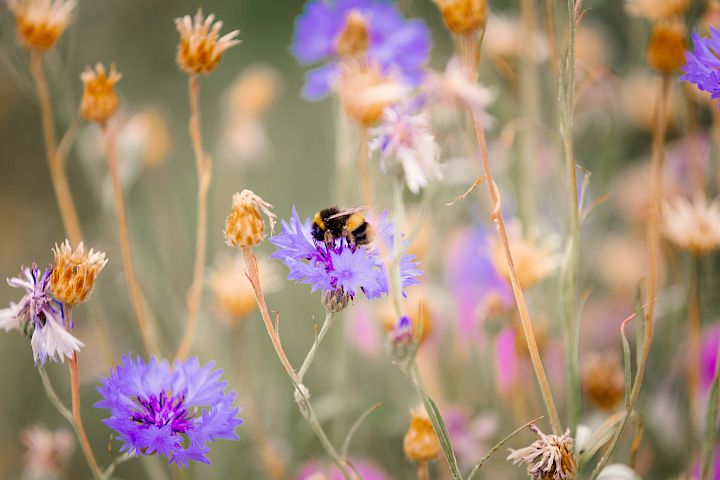
Four ways to make the most of your garden, with wildlife in mind
Encouraging birds, mammals and insects to visit your garden is an ideal way to help them thrive in their natural habitat. Making small changes within your garden might just help to look after local wildlife, keep valuable green spaces thriving and control garden pests.
In this blog, we have pulled together some top tips on how best to attract local wildlife to your garden, and how to help it thrive all year round. From installing a bird box and bird feeders, to planting wildflowers; gardens of all shapes and sizes can be made more wildlife friendly.
All the information highlighted within this blog can also be found in our ‘Wildlife in Your Garden’ guide. The free guide, designed to encourage homeowners to enjoy wildlife in their gardens, can be downloaded here.
1. Bird boxes
A great way to attract birds to your garden in the spring is to provide a safe place to nest. One simple way of achieving this is by installing a bird box. You might choose to build your own box, or alternatively, you can purchase one from the RSPB or most local garden centres.
Once you are ready to erect your nest box, we recommend choosing a location out of direct sunlight and heavy wind, ideally facing between north and east. We also recommend placing it at a height of 2-3 metres above the ground, in a shrub, tree or on a fence post for most bird boxes.
Most importantly, don’t forget to clean out your nest box in the autumnal months to prevent the transmission of pests.

2. Bird feeders
Adding a bird feeder to your garden is a quick and easy way to attract wildlife and help it thrive. Bird feeders can be easily purchased, or you might even try to create your own using fat or suet as the food source. This mixture can be pushed into half coconuts, into the gaps on pinecones, or even into household plastic recycling such as yoghurt pots!
If you are just starting out, and looking at buying bird food, keep to a simple seed mix or peanuts, which can be placed in basic plastic or metal feeders. Place peanuts in a rigid mesh feeder to ensure only manageable pieces can be swallowed by small birds and their chicks.
Don’t be tempted to overfill your feeders, it is recommended to put a small amount in and top up when necessary (ensuring you regularly clean your bird feeder). This will reduce pests and avoids the risk of old food going mouldy.
Don’t forget to provide water for the wildlife you’re encouraging to your garden. A shallow water dish or bird bath can be used for both drinking and bathing. However, don’t forget to keep the water clean and not placed too close to dense cover.
3. Hedgehog houses
Hedgehogs, despite being one of the UK’s best-loved native species, are showing serious population declines. Due to a loss of natural spaces, these animals are depending more and more on urban and suburban environments, and there is a lot we can do to encourage them into our gardens. Building a hedgehog house can provide a safe shelter and sleeping place for these nocturnal creatures. It’s important to place the house in a quiet part of the garden, out of direct sunlight and rain, ideally within dense cover.
Remember to give it a clean out once a year to prevent parasites (late March to early April is the best time for this, to ensure you don’t disturb any hibernating hedgehogs!). If building a hedgehog house is not feasible, a log pile is a fantastic way to encourage hedgehogs into your garden. Not only does this provide a safe sleeping place for them, but it also attracts lots of different insects that they feed upon.

4. Wildlife friendly planting
Wildflowers are a great place to start and are available from most garden centres and online - look for seed mixes containing cowslips, foxgloves, toadflax or harebells. If you have the space for a lawn, a great option is to let the lawn grow long, or plant wildflower seeds in the bare soil.
Planting trees and shrubs would also be a great addition to your garden. Smaller gardens can still accommodate native trees and shrubs if you select the right species, and many grow happily in pots. If you are pushed for space, another option is to create a vertical plant wall. Specialised designs are available online, or they can be created using old pallets. Not only is this a great use of space, but it will also act as a sound buffer between you and your neighbours!
There are many simple and enjoyable ways to make the most of your garden whilst keeping wildlife at the forefront of your mind. We’d love to see how you’re styling your Gleeson Garden with wildlife in mind, don’t forget to tag us in any posts you share on social media for the chance to be featured.

